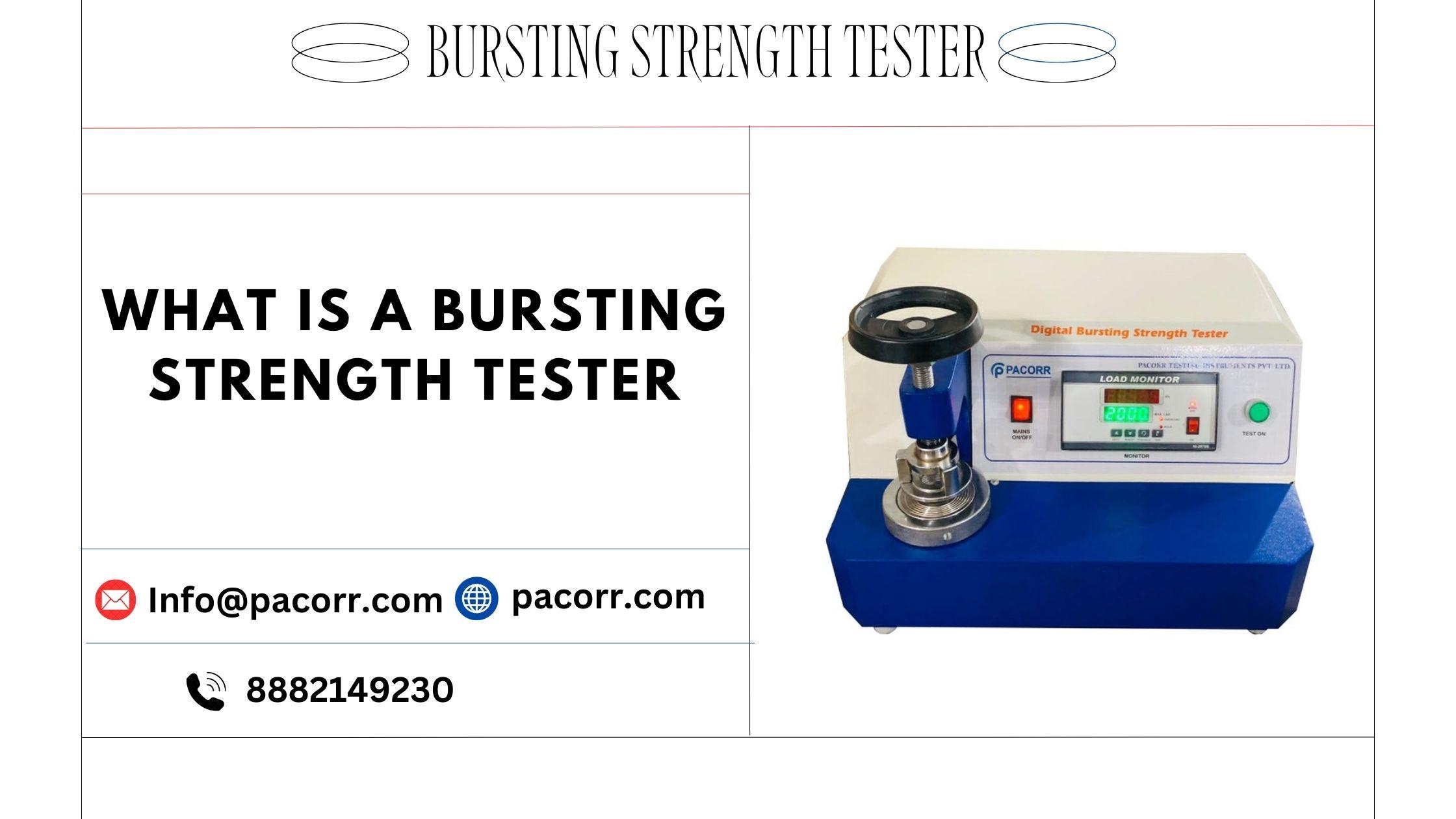Introduction:
In the packaging industry, ensuring the strength and durability of materials is critical to prevent failures during shipping and storage. The Bursting Strength Tester plays an essential role in this process by evaluating the pressure at which a material bursts or ruptures under stress. This testing machine helps manufacturers maintain high standards, ensuring that packaging materials, such as paperboard, corrugated boxes, and textiles, are capable of withstanding the pressures of transportation and handling.
What is a Bursting Strength Tester?
A Bursting Strength Tester is an instrument used to determine the bursting strength of paper, cardboard, and other similar materials. The test measures the force at which the material ruptures when pressure is applied. The tester works by applying hydraulic pressure to the sample until it bursts, and the force required to cause the rupture is recorded.
Key Features of a Bursting Strength Tester:
- Precise Pressure Application: The tester uses a controlled hydraulic system to apply pressure evenly to the material.
- Automated Results: After the material bursts, the tester automatically records the bursting force and presents the data in a clear, easy-to-read format.
- Wide Range of Testing: It can test various materials, including paper, corrugated cardboard, and textiles.
- Accuracy: Modern testers are equipped with high-precision sensors that provide accurate and reliable results.
- User-friendly Interface: With touch-screen technology and digital controls, Bursting Strength Testers are easy to operate, reducing human error and increasing productivity.
Why is Bursting Strength Important for Packaging?
The primary purpose of packaging is to protect the product inside, and the material’s strength plays a critical role in this. Bursting Strenght Testing refers to a material's ability to resist internal pressure or bursting caused by external forces, such as stacking pressure, shipping impacts, and environmental changes. For example, corrugated boxes used in shipping must withstand stacking pressures without rupturing. If they burst too easily, products can be damaged, leading to costly returns, customer dissatisfaction, and brand reputation damage.
Here are a few scenarios where Bursting Strength Testing is crucial:
- Shipping and Logistics: Packaging materials need to endure handling during shipping. A low bursting strength can result in the rupture of boxes and lead to product losses.
- Storage Conditions: Packaging exposed to humidity, temperature changes, and pressure can weaken. Regular testing helps manufacturers ensure that the material will maintain its integrity even under varying storage conditions.
- Safety Standards: Certain industries, like pharmaceuticals and food, require packaging to meet strict strength standards to protect the product and ensure safety during transit and storage.
Benefits of Using a Bursting Strength Tester:
- Ensures Product Protection: By ensuring that packaging materials are strong enough to withstand pressure, Bursting Strength Testers help manufacturers protect their products from damage, ensuring they arrive safely at their destination.
- Quality Control: Regular testing with a Bursting Strength Tester helps maintain high-quality standards in production. It ensures that every batch of packaging materials meets the required strength specifications, reducing the chances of product damage and returns.
- Cost Efficiency: By preventing packaging failures, businesses can avoid costly product damage, returns, and potential claims. This helps reduce waste and optimize the use of packaging materials, ultimately saving money.
- Compliance with Industry Standards: Many industries have specific packaging requirements that include burst strength testing to ensure safety and quality. Using a Bursting Strength Tester helps manufacturers comply with these regulations and avoid penalties.
- Improved Production Efficiency: The automated nature of the Bursting Strength Tester reduces the time and effort involved in manual testing, helping to speed up the quality control process and improve overall production efficiency.
Applications of Bursting Strength Testers:
- Paper and Pulp Industry: To assess the strength of paper, especially for use in packaging and other industrial applications.
- Corrugated Board Production: Essential for testing the integrity of corrugated boxes, often used in the shipping of goods.
- Textile Industry: To check the strength of textile materials used in packaging, bags, or containers.
- Pharmaceutical and Food Packaging: Ensures that packaging materials used for products like medicines and food items are sturdy enough to protect the contents during transit and storage.
How to Use a Bursting Strength Tester:
- Sample Preparation:
- Cut the material sample to the required size, ensuring that it is flat and free from any wrinkles or damages.
- Place the sample onto the testing platform, aligning it as required by the tester’s specifications.
- Set the desired pressure limits on the tester based on the type of material being tested.
- Start the test, and the machine will gradually apply pressure to the sample until it bursts.
- Once the sample bursts, the machine records the force required and displays it on the screen.
- Review the data to determine if the material meets the required standards for bursting strength.
- The results can be saved or printed for further analysis or reporting purposes.
Conclusion:
In today’s competitive manufacturing environment, testing the strength of packaging materials is vital for product protection, cost-efficiency, and customer satisfaction. The Bursting Strength Tester Price is an indispensable tool that helps manufacturers maintain packaging integrity, comply with industry standards, and safeguard their products. Investing in a reliable Bursting Strength Tester ensures that your products reach customers in perfect condition, boosting brand reputation and operational efficiency.
